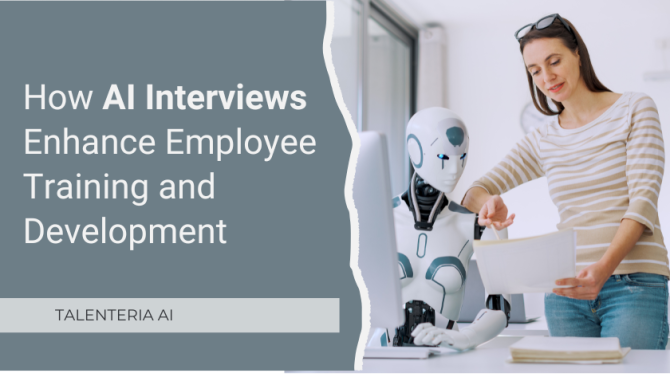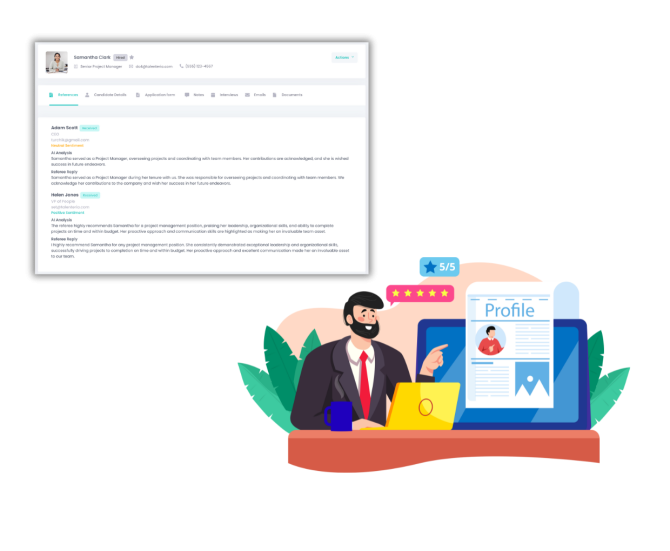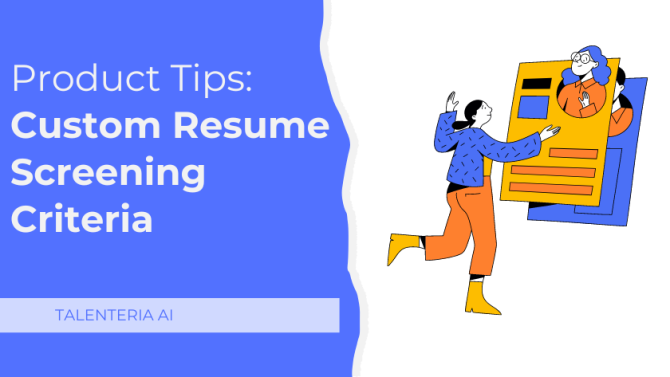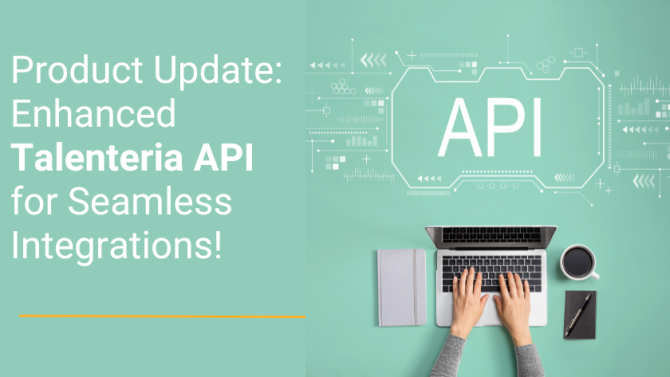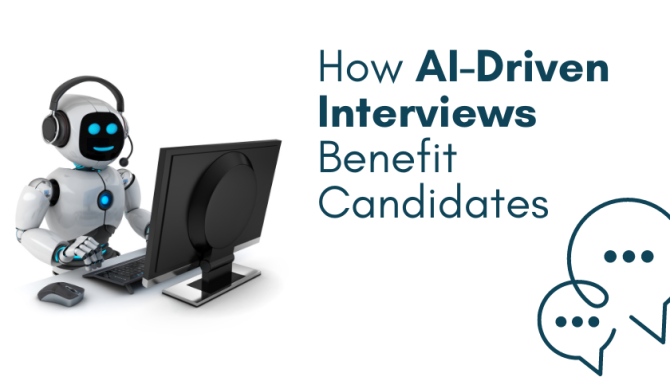
Managing An Unstructured Interview
When you conduct an unstructured interview, you don't follow a set of questionnaires for your interviewee. You rely on your knowledge and ask questions that pop into your mind. You don't have to have a formal interview. Rather, you make a normal conversation that is spontaneous with the interviewee. Unstructured interviews are usually conducted to foster an open-minded conversation. You can gain in-depth information and get great insight into the candidate’s expertise and overall demeanor.
Types Of Unstructured Interviews
There are two primary types of unstructured interviews in the hiring process: creative and postmodern.
Creative Interview
Creative interviews don’t adhere to traditional “rules.” You come up with your sequence and questions, which do not conform to the typical interviews. You have total freedom and can tailor the tasks and questions to your liking.
An example of a creative interview is incorporated in job interviews where the applicants practice their thinking ability. You can ask them to solve a problem related to the company, giving them 2 minutes to think.
Postmodern Interview
A postmodern interview allows you to ask questions and answer questions from the interviewee. Participation is the key component of the interview. Using your knowledge of the topic and the interviewee’s knowledge, you can gather useful information. The whole point of this kind of interview is to change the power dynamic. The job candidate is considered a co-interviewer and has more input in the direction of the conversation.
Advantages and Disadvantages of Unstructured Interviews
Unstructured interviews have a wide array of benefits, including:
- Comfort - You can establish a conversation with the interviewee like an everyday conversation between colleagues and friends. You don’t have to make formal introductions and questions that could intimidate the interviewee. The comfort will allow them to create a connection with you and give helpful information spontaneously. In job interviews, you can know the personality of the applicant and get to feel if the applicant can fit into the company.
- Formulate new questions - You can create numerous questions on the spot that can help you learn more about the subject matter. You don’t have to follow a set of questions only. You have the freedom to ask questions that get into your mind as the interview progresses.
- The interviewee can also learn - Since the interview is not formal, the interviewee can ask you questions to also learn your take about the subject. You can help each other gain knowledge.
- Depth and Details - When you are conducting the interview, you will go into details as you formulate your questions during the interview. The respondent will talk more on the topic and get a deeper understanding of the subject.
However, there are still disadvantages to consider, such as:
- Time-consuming - Without a set of questions, you can ask lots of questions to your respondent. Yet, you won't be conscious of the time, and you might end up getting half of the day spent on the interview.
- Numerous information - With the numerous questions asked, you will be having a hard time classifying the many answers you gathered from your respondents.
- Can lead out of focus on the topic - When you get too comfortable with the respondent, you might strike a conversation that is unrelated to the topic.
- Difficulty comparing - Since you have no sets of questions and asked different questions with different respondents, you will not be able to compare each respondent's answers. The unique set of each question will give you a unique set of answers that cannot be grouped only to a yes or no. The answers will have various interpretations and bearing. Like, you may encounter problems if you are choosing the best candidate from the interview. You cannot classify and weigh the answers based on a standard given. You need to go in-depth and analyze all the answers.
- Bias - Having favorites based on your preference can be a problem in conducting interviews, especially for job openings. You will have your own bias and select the applicant based on your preference. Thus, you need to analyze the whole interview with different candidates based on their answers and how they performed in the interview.
Differences Between Unstructured and Structured Interviews
1. Format
The structured interview follows a format with its questionnaires. A series of questions are asked in sequence. It is usually answerable by “yes or no” and by satisfaction ratings of 1 to 5.
While unstructured interviews do not have a format, the questions used are from your thoughts as the interview progresses. Questions are formulated like initiating conversations, like asking the respondent to say something about themself.
2. Medium Used
Unstructured interviews make use of recorders for the interview; it allows you to have a copy of the interview that you could go back to if you need a certain detail on the topic. The common medium is audiotapes, phones, and video recorders.
While structured interviews use survey forms and questionnaires, you need to prepare beforehand and follow the questioning sequence. These forms are distributed personally or mailed to the respondents.
3. Gathering Information
Unstructured interviews are conducted one-on-one with the respondents. You can set a date for the interview to happen. The information is gathered with the answers given by the respondent through the physical interview.
On the other hand, structured interviews are conducted by distributing questionnaires for the respondents to answer. The information gathered is from the respondents’ answers on the form that are classified and interpreted.
4. Subjectivity
Unstructured interviews are subjective since the answers are mostly based on your respondent’s opinion and experience. Therefore, your questions do not have a correct answer. The respondents only describe what they know and share additional information that they think can answer the question. For example, if you asked them to describe their experience with the previous company, they would share their thoughts about their job and describe what they were doing on their work.
However, if you conduct structured interviews, you need to form objective questions that give you objective information. Your goal is to have a definite answer for each question. You need to arrive at a conclusion based on the answers you collected. For example, if you wanted to know the percentage of users of your product in the city, you conducted a survey asking if they use your product with a yes or no answer. Then, with the collected data, you can determine the percentage of the people in the city who use your product.
5. Set of Questions
When conducting an unstructured interview, you collect data with the numerous follow-up questions you can think of during the interview. While conducting a structured interview, you have the same set of questions from numerous respondents. You will have the same data collected that are classified.
6. Data Size
Structured interviews have larger data collection with a large sample size. You need to randomly select your respondents' population to represent the whole population. You need to use a statistical tool to know the number of respondents you need, which is usually large.
Unstructured interviews focus on a certain individual to gather information. It usually has small data gathered with a specific number of interviews conducted. This lets you focus on the respondent's answers, not on the number of interviewees you have.
7. Data Comparison
You cannot compare your data gathered from unstructured interviews since you have a unique set of questions for each of your respondents. With this, respondents will also have unique answers that you can't compare to any standard answers for that question.
On the other hand, you can compare data with structured interviews since you used the same set of questions and parameters on your respondents. The comparison is made using statistical analysis to know whether the results significantly affect your questions.
Examples of an Unstructured Interview
1. Job Interview
During job interviews, unstructured interviews are conducted to know the applicant's personal experience on the job. This allows you to assess if the skills and knowledge of the job seeker fit your company.
Doing unstructured interviews will also let you have a grasp of their personality. Get to know the applicant by asking questions that pop into your mind at that moment. Through their answers, you can see how they'll react to certain workloads, including their ability to solve problems that they might encounter on the job. With this in mind, you need to do a thorough interview to get the answers to your questions appropriately.
2. Qualitative Research
Qualitative research is done with a focused subject. You conduct one-on-one interviews with the respondent to know the experience they had specifically. You need to focus on each detail that the respondent would be sharing since it might have significance in the study being conducted.
3. Phone Interview
Phone interviews are spontaneous and conducted in an instant. For example, you need to know about the rules and regulations of the place you will be visiting. You can ask individuals who have been to that place already to know what you can expect.
4. Panel Interview
Panel interviews are conducted after a presentation. Panelists are invited to scrutinize the presentation to give honest opinions on improving the work. A panel interview is conducted to ask questions to the presenters if there are unclear discussions. Panelists are usually experts in the field and can ask any questions in an instant. The panelists formulate the questions based on the information presented.
5. Customer Interview
You conduct customer interviews in physical stores. Doing so lets you know your customers' thoughts about your products and services. You can ask how the experience was at the shop. Or perhaps inquire about how what they want to experience the next time they visit.
6. Group Interview
Group interviews are done after a group goes through similar activities. Though the persons involved have done the same activity, they have different experiences and opinions. For example, you have a taste test on your new product. Then you can ask a group of people to try it out and interview them on what they can say about it. You will get different answers and can use them before you launch your product for improvements.
7. Exit Interview
Exit interviews are conducted in companies for the employees retiring and resigning from the job. The exit interview helps you know the learnings your employees have after their years of stay in the company. You can also ask different questions on their overall experience with the company. You can ask them to share stories on how they started and grow into the employees they are now.
8. Customer Help Desk
When your customers have a report on an incident, they go to the customer help desk. You can ask questions about a particular experience. The interview will help you assess the situation, and you will know how to respond to the unfortunate incident. For example, they encountered a scammer using the company's name and logo. You can ask them how the incident occurred and give details on the specific incident. Then, you can ask your legal management team about the matter and create solutions.
Types of Questions for Unstructured Interviews
Open-ended questions are used for unstructured interviews. The questions are formulated with no expected right answers. You ask questions that are based on the respondent's subjective experience. The answers from open-ended questions are not limited to yes or no. The answers are descriptive and dives deep into specific details.
Open-ended questions can be in the form of questions or statements. The goal is for the respondent to answer based on their knowledge.
- Tell us about your experience in the previous company you’ve worked for.
- Describe how you can sell me the product of your previous company.
- How did your college experience contribute to your work performance?
- What are the top five priorities you have in your life right now?
- How did you get to know about our company?
- What will be your contributions to the company once we hire you?
- Describe your first day on your job, including problems you encountered.
- Tell me about yourself and describe your dream job.
- What are your expectations for the company?
- What accomplishments do you have that can be an asset to our company?
Conduct an Effective Unstructured Interview
Unstructured interviews are an excellent strategy to use at the beginning of the interview process. By conducting them over an initial phone interview, you’ll be alerted to any potential red flags, which could then be further explored in a more traditional interview. Furthermore, you can also use an unstructured interview towards the end of an interview series to get a better idea about the candidate’s personality.
Do you have a job opening in your company now? Are you struggling to find the perfect candidate for the job? A new generation platform, Talenteria, can help you create your career site to post recruitment and hiring for your company. The job seekers will know about your company and get to apply even by just using their phones. You can save your time for interviews by choosing the best candidates using Talenteria’s hiring process.
